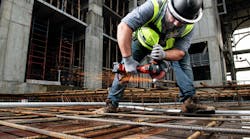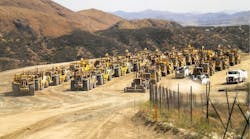An article in Finance & Commerce reports that policymakers are now scrutinizing buildings as a major source of pollution, prompting companies to look for greener alternatives.
“Everyone’s aware that we use electricity and energy to heat our homes and turn our lights on, but they might not have thought that loads of energy is needed in all the materials required to build the building in the first place,” said John Barrett, professor at the school of Earth and environment at Leeds University in northern England. “It’s a massive issue.”
According to the article, a significant part of a building’s lifetime carbon footprint is locked into the materials used. Those materials are not regulated by anyone, according to the U.K. Green Buildings Council.
One example the group cited, was the Leadenhall Building in London’s financial district. According to the article, its construction required emissions of 92,210 tons of carbon, or the annual emissions of 20,000 cars. About 60 percent came from steel and cement.
Emissions from making the cement, steel, and rubber materials used in construction, for example, make up 60 percent of a building’s emissions taken across extraction, transport, and on-site. Almost half the source emissions from building come from fossil fuel extraction and electricity.
Steel beams support many commercial buildings and an increasing number of homes, but making them is also one of the most polluting industrial processes. A number of steps in the manufacturing process put CO2 into the air, with each ton of steel produced leaking 1.83 tons of carbon into the atmosphere.
Cement-making is another polluting process, which requires baking limestone at more than 2,550 F. The kilns used to break carbon out of the limestone release CO2.
If workers made the switch to greener versions for the materials that go into construction, lifetime emissions can be reduced by 44 percent by 2050.
Source: Finance & Commerce




